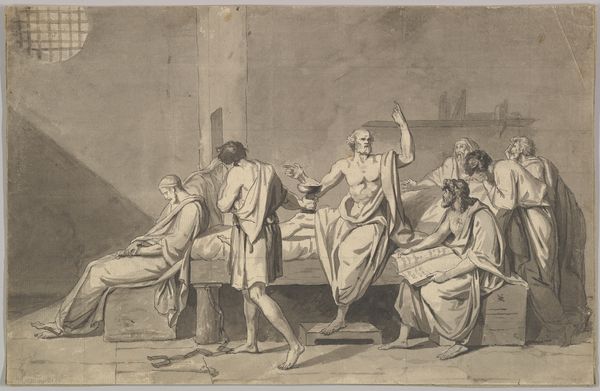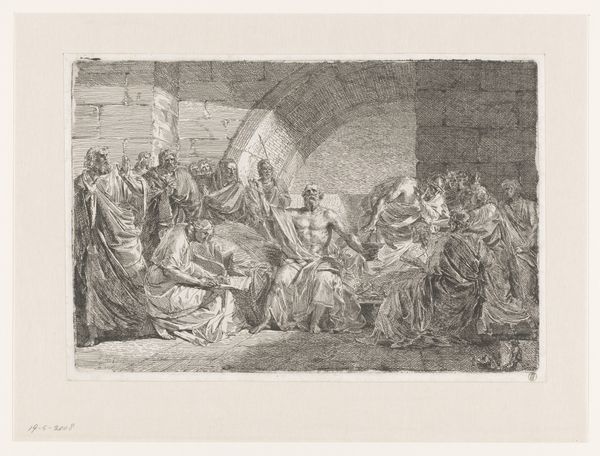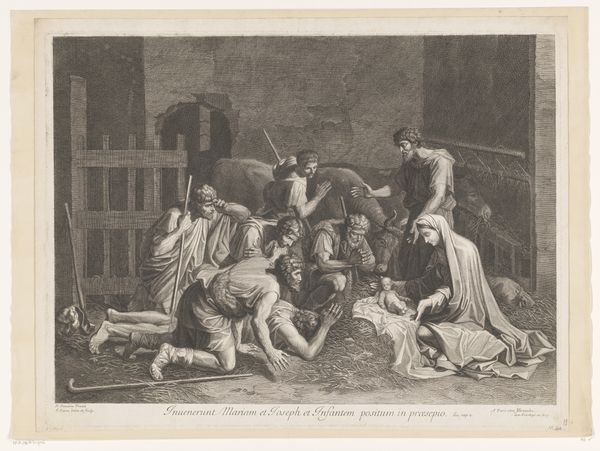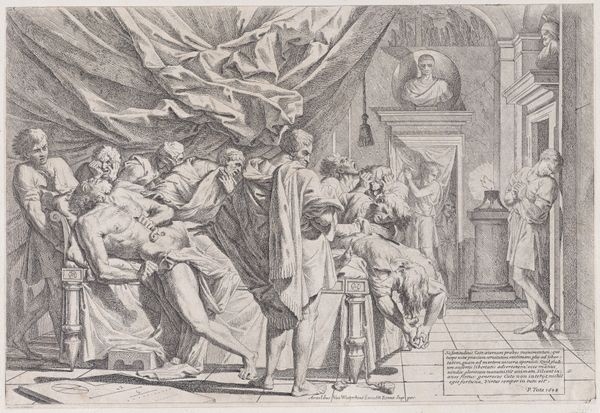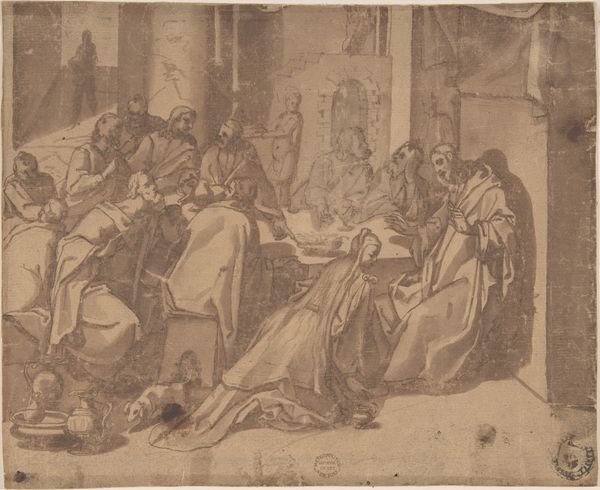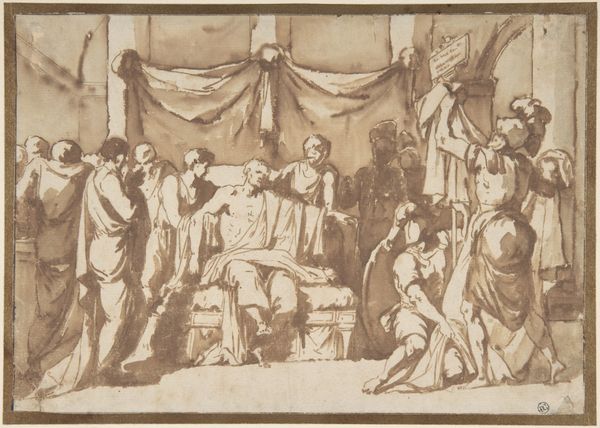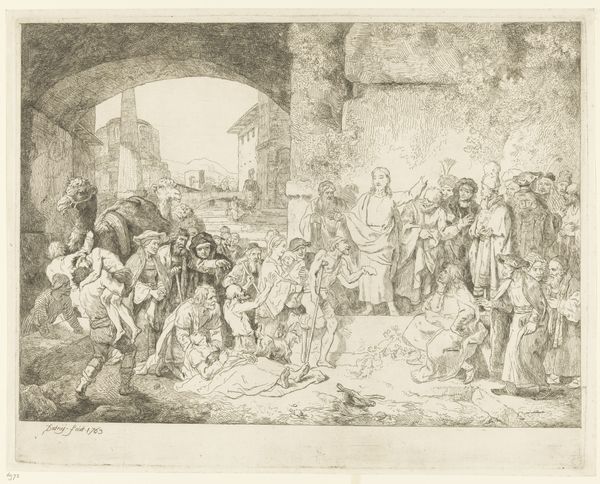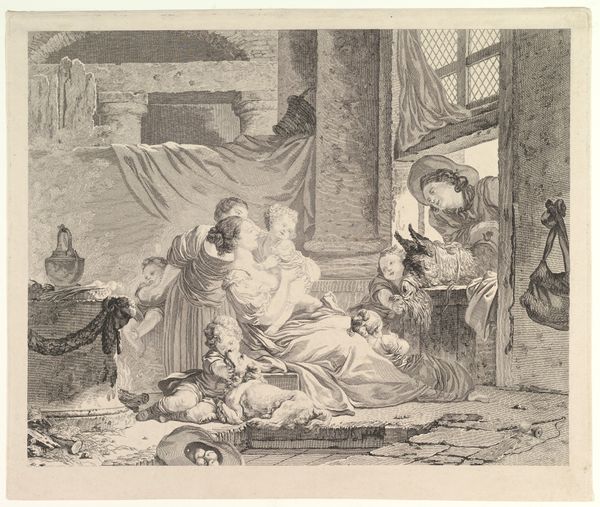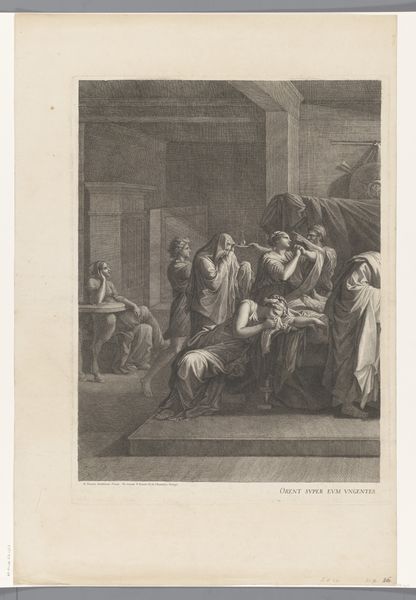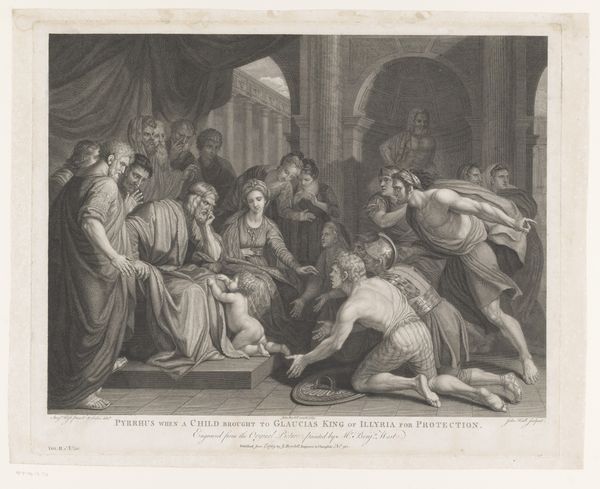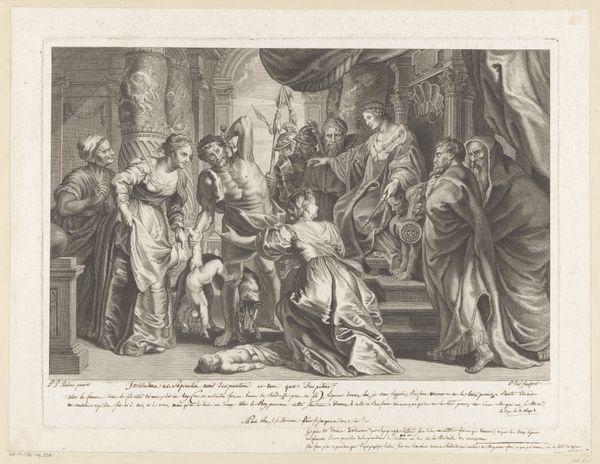
Soldier's Death, from "The Life and Death of a Soldier" 1781
0:00
0:00
Dimensions: Sheet: 14 13/16 x 16 5/16 in. (37.6 x 41.4 cm)
Copyright: Public Domain
Editor: This is Robert Blyth's "Soldier's Death, from "The Life and Death of a Soldier," an engraving from 1781. There's such a sense of quiet drama here, the somber figures surrounding the dying soldier really set a melancholic mood. What do you see in this piece? Curator: It's compelling, isn’t it? Beyond the immediate emotional impact, I see this work as engaging with the burgeoning Romantic movement’s focus on the individual and their emotional experiences. Think about it: why depict this soldier's death with such... theatricality? It critiques the glorification of war and subtly emphasizes the personal cost. Where do you see the tension between personal grief and patriotic duty? Editor: Well, there’s the contrast between the imposing soldiers and the intimate scene of the soldier’s bedside. Almost like their duty brought them to this, but they can do nothing now. But what does it mean, framing it like this? Curator: Exactly! Blyth uses this juxtaposition to challenge us. What narratives are perpetuated by these stoic figures, and how does the dying soldier subvert them? Who gets to write history? Consider also how printmaking itself democratizes access to such narratives. Could it be argued that Blyth's choice of medium actively positions him in opposition to the elite, ensuring wider circulation of a story highlighting war's true cost? Editor: So, it's not just about the individual's experience of death, but also about how that experience is framed and distributed in society? Curator: Precisely! It’s about power dynamics, narrative control, and who benefits from perpetuating specific understandings of war. This work isn't simply a historical document, but a critical commentary on the construction of history itself. Editor: That's really changed my perspective. I was focused on the surface-level emotions, but seeing it as a critique of the narratives surrounding war makes it much more relevant today. Curator: Indeed, by questioning whose stories are told and how, we begin to understand the ongoing relevance of art to contemporary discussions about conflict, power, and memory.
Comments
No comments
Be the first to comment and join the conversation on the ultimate creative platform.
